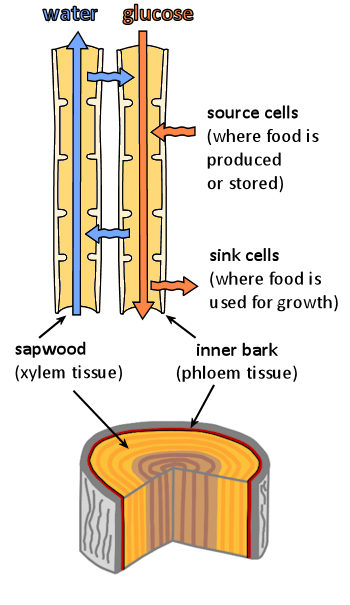Vascular system

Trees have a vascular system for transporting water and food.
The upward system is in the sapwood, which comprises the living cells in the xylem tissue.
Water from the soil is carried up through the sapwood to the leaves, where photosynthesis takes place.
The downward (and outward) system is in the inner bark, or phloem.
This is where the food is transported from the source cells – where food is produced or stored – to the sink cells – where food is used for growth or put into storage.
The suction force that pulls the moisture up to the leaves is powered by the process of transpiration, where water vapour evaporates into the atmosphere through the stomata when they are open.
In some trees, it has been estimated that for every one tonne of wood produced (as a rough average), the tree will take about 1000 tonnes of water from the soil and transport it from the roots, through the stem and up into the leaves.